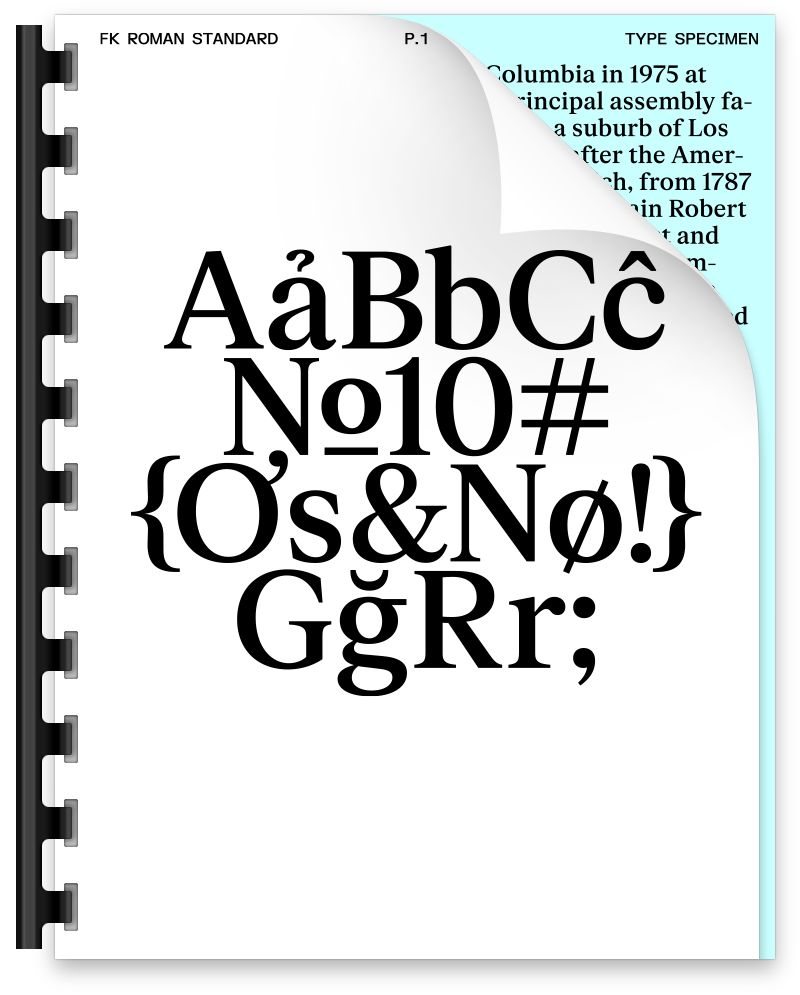FK Roman Standard is a neutral serif typeface, inspired by a newspaper typography giant Times New Roman. Following a release of FK Grotesk Neue earlier in 2020, FK Roman Standard is yet another addition to our friendly familiar-looking typefaces. The vertical metrics perfectly match FK Grotesk Neue, which makes the two utilitarian families ideal workhorse combination for almost any occasion.
FK Roman Standard supports Latin Extended-A character set (i.e. Western European, Central European and Southeastern European languages) as well as Vietnamese language. For complete specs see typeface specimen.
- Designer
Květoslav Bartoš
- Publisher
Florian Karsten Typefaces
- Release date
December 2020
- Version
1.1.2 (January 2022)
- Formats
Static (OTF, TTF, WOFF, WOFF2), Variable (TTF, WOFF, WOFF2)
- Glyphs
752
- OpenType features
Standard Ligatures, Case Sensitive Forms, Fractions, Numerators, Denominators, Scientific Inferiors, Superscript, Subscript, Oldstyle Figures, Lining Figures, Proportional Figures, Tabular Figures, Slashed Zero
- Language support
Afrikaans, Albanian, Asturian, Azerbaijani, Basque, Bemba, Bosnian, Breton, Catalan, Cornish, Croatian, Czech, Danish, Dutch, English, Esperanto, Estonian, Faroese, Fijian, Filipino, Finnish, French, Frisian, Friulian, Galician, Ganda, German, Hungarian, Icelandic, Indonesian, Irish, Italian, Kinyarwanda, Klingon, Latvian, Lithuanian, Luxembourgish, Makhuwa, Maltese, Norwegian, Polish, Portuguese, Romanian, Romansh, Sango, Scottish Gaelic, Serbian, Shona, Slovak, Slovenian, Somali, Spanish, Swahili, Swedish, Swiss German, Turkish, Uzbek, Vietnamese, Welsh, Zarma, Zulu
- Licensing
A basic license purchased via this website combines desktop and web license and covers installation on a given number of workstations within one organisation and allows you to self-host webfont files for a single domain with no time limitation for a given number of unique visitors per month. For more information about other licensing options, please check FAQ or get in touch.




